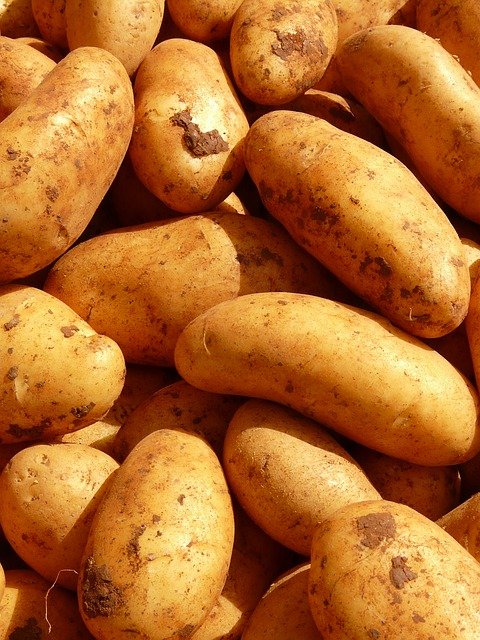By Tim Lambert
In Tudor England meat was a luxury. However, vegetables were cheap. Tudor vegetables included cabbages, onions, cauliflower, cucumbers, leeks, lettuce, spinach, carrots, and turnips. Brussels sprouts were grown in Europe in the 16th century but they were rare in England.
Common Tudor fruits were apples, strawberries, pears, plums, blackberries, raspberries, and lemons. The rich could afford expensive fruits such as pomegranates, peaches, oranges, and walnuts.
In Tudor times many people thought fresh fruit was bad for you. They did eat fruit but usually after it was cooked and made into a tart or pie.
On certain days by law, people had to eat fish instead of meat. At first, this was for religious reasons but later in the 16th century, it was to support the fishing industry. If you lived near the sea or a river you could eat fresh fish like herring or mackerel. Otherwise, you might have to rely on dried or salted fish.
Poor people lived on plain food. In the morning they ate bread and perhaps cheese and onions. In the evening they usually ate pottage. They mixed grain with water and added vegetables and (if they could afford it) strips of meat.
Bread was an important food for the rich and poor in Tudor Times but it varied in quality. Rich people’s bread was made from fine white flour. Poor people ate coarse bread of barley or rye.
Tudor Sweets
The Tudors were also fond of sweet foods (if they could afford them). However, in the 16th century sugar was very expensive so most people used honey to sweeten their food. Rich Tudors ate preserved fruit, gingerbread, sugared almonds, and jelly.
Marzipan was introduced into England in the late Middle Ages. It is a paste made of almonds and sugar. The Tudors used marzipan to make edible sculptures of animals, castles, trees, and people called subtleties.
The Tudors also ate simnel cakes. (Simnel was originally the name of a fine flour).
At Christmas, the Tudors enjoyed mince pies. In those days they had 13 ingredients to represent Jesus and the apostles. They were made with fruit (raisins, currants, prunes) spices (cloves, mace, black pepper, saffron), and also mutton to represent the shepherds. Usually, they were shaped like a crib.
In those days puddings usually contained meat. Another dessert, syllabub was invented in the 16th century. Banbury cakes were first mentioned in 1586.
In the 16th century, new types of food were introduced from the Americas. Turkeys were introduced into England in about 1525. Potatoes were brought to England in the 1580s but at first, few English people ate them.

Rich people liked to show off their gold and silver plates. The middle classes would have dishes and bowls made of pewter. The poor made do with wooden plates and bowls. There were no forks in Tudor times. People ate with knives and their fingers or with spoons. Rich people had silver or pewter spoons. The poor used wooden ones.
Ordinary people in Tudor times made much of their own food. A farmer’s wife cured bacon and salted meat to preserve it. She baked bread and brewed beer. She also made pickles and conserves and preserved vegetables. Many prosperous farms kept bees for honey.
Tudor Drinks
Ale (made without hops) was still the main drink of ordinary people in the early 16th century but beer gradually became more common and by the end of the century, it had replaced ale. Tudor housewives were expected to brew their own beer although it was also sold commercially.
Cider and perry were common in certain parts of England in the 16th century. However, in the 17th century cider making reached a peak.
Wine was still the drink of the wealthy as it had to be imported. Wine was still imported from France and Germany but an increasing amount was imported from Spain and Portugal. Sweet wine was still imported from the Eastern Mediterranean. In the 16th century, wine was often flavored with spices.
In 16th century England sherry, which was known as sack was also a popular drink. The origins of brandy are obscure but it was a popular drink by the 16th century.
At Tudor feasts, people did NOT throw bones on the floor for the dogs! In reality, you put bones in a dish called a voiding dish and it was very bad manners to allow a dog into a room when you were eating.
My Youtube video about food in the 16th century
Last Revised 2025